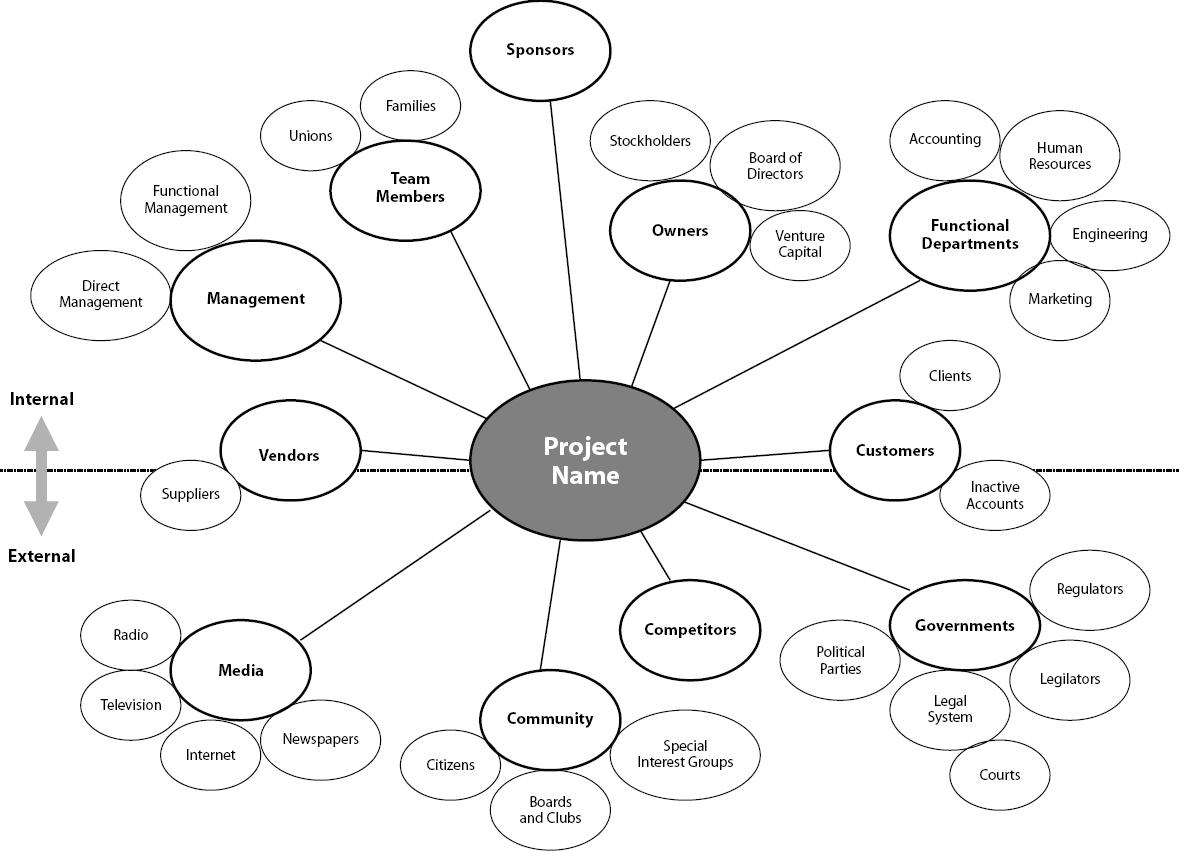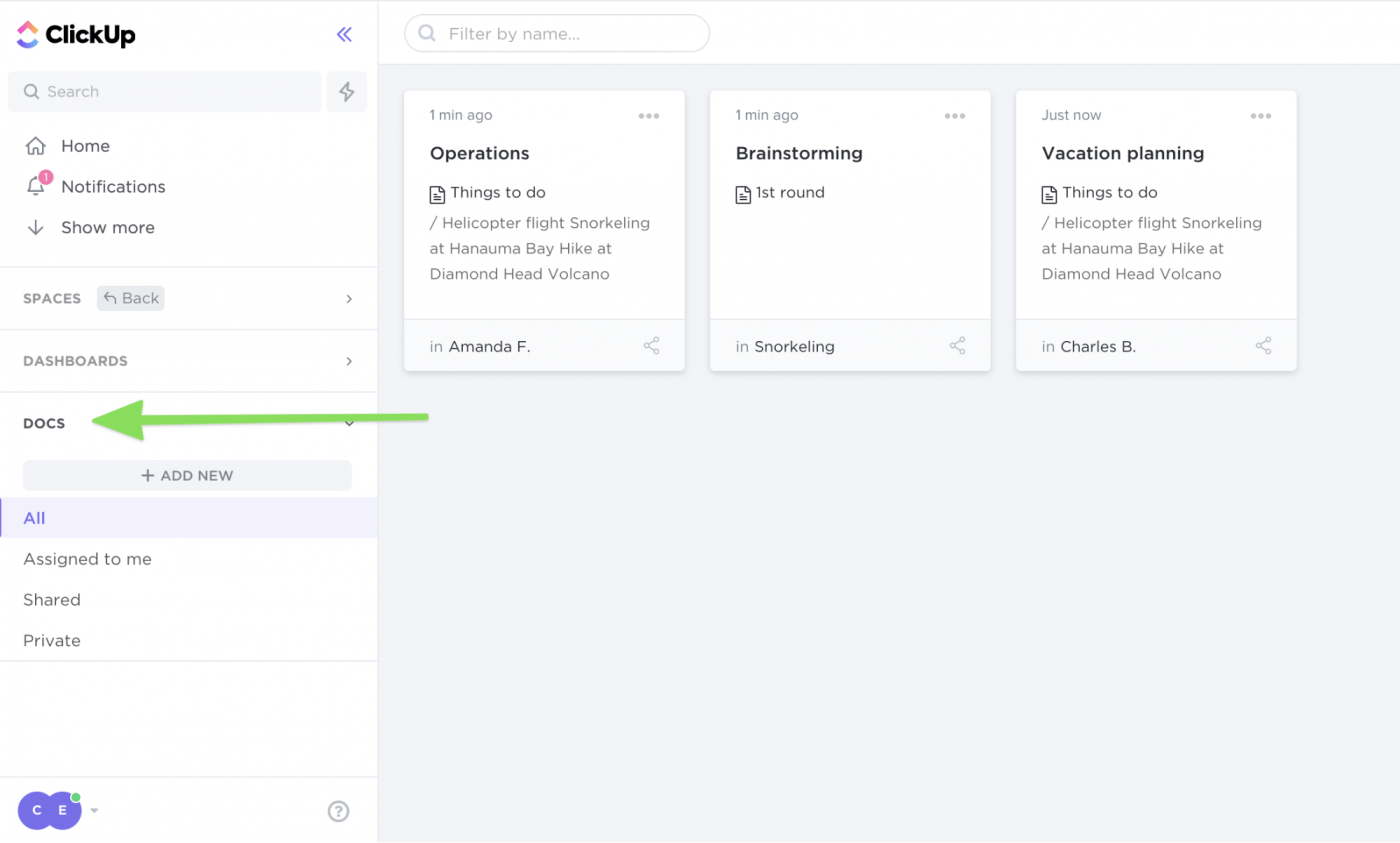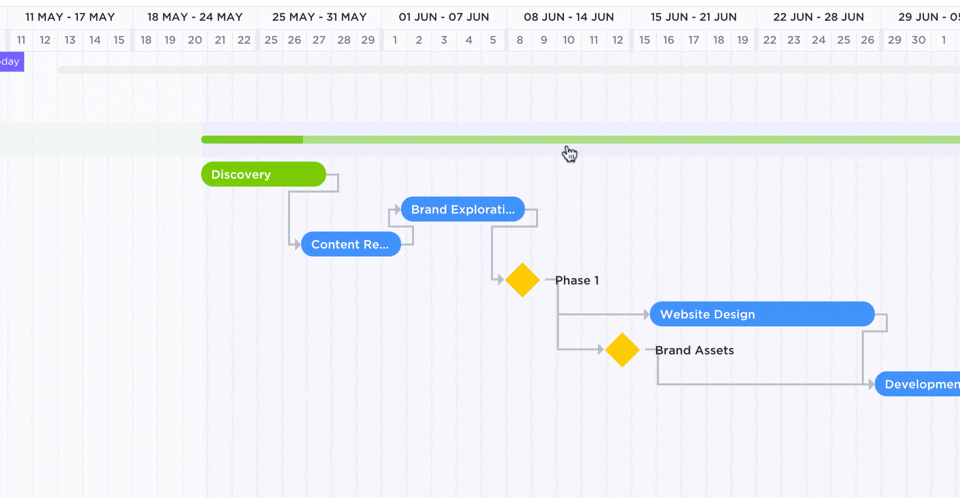

In this article, we’ll learn who are stakeholders in project management, types of project stakeholders, examples, and how to analyze them. We’ll also learn the most efficient way to carry out project stakeholder management.
Alright, let’s find out everything about project stakeholders. 🔍
What is a Project Stakeholder?
A project stakeholder is an individual, organization, or group that takes an active part or interest in the project activities, has a potential impact on project deliverables and/or the project environment, and is affected by the project’s outcome or is close to others who may be impacted by the project.
Basically, stakeholders are people or groups that have something to gain (or lose) from the project. The Project Management Institute defines a project stakeholder as, “individuals and organizations who are actively involved in the project, or whose interests may be positively or negatively affected as a result of project execution or successful project completion.”
So if the projects do well, then the stakeholders will benefit from it.
However, if the project goes downhill, then the stakeholders go down with it too… 😅
Who Are Project Stakeholders?
You can classify stakeholders in project management into two types: internal and external stakeholders.
These two types of stakeholders in project management are based on the stakeholder relationship with the organization:
Internal stakeholders
As the name suggests, an internal stakeholder is from within the organization or business. They focus on project risks, and are directly involved throughout the project process. These company team members usually possess deep knowledge of their audience, clients and the company, and–are often seen as an authority, often holding high level leadership positions that work directly with different levels of operations to achieve desired outcomes.
As a project manager, here are some of the common internal stakeholders you may deal with:
- Project sponsor
- Project investor
- Project manager
- Project team members
External stakeholders
External stakeholders, on the other hand, don’t belong to your organization or business. These project management stakeholders are outsiders, like customers or end users. In other words, it’s your responsibility to manage these communication with essential stakeholders and external customers, while keeping critical information private until it’s essential to define to all parties.
Meeting the expectations of different kinds of influential stakeholders, giving them visibility, and keeping different stakeholders informed is half of a stakeholder management plan. But as project managers, you must first be able to name these stakeholders and also understand the needs of project sponsors. The most important thing to remember is to clearly communicate the project scope and manage stakeholder expectations and sometimes long lists of demands from leadership.
That’s great. But who are the stakeholders in a project? As the project manager, it’s important that you identify project stakeholders right from the beginning and stay focused on project execution. Resource managers, functional managers, and other top management may be more focused on project phase and project lifecycle planning, while supportive stakeholders treat all project team members as if they are on the same level and like to stay up to date on project progress as well as customer feedback.
Here are some of the common external stakeholders:
- Vendor
- Supplier
- Customer
- Subcontractors
How to Do Stakeholder Analysis?
Stakeholder analysis, or as some may call it, stakeholder mapping, is IMPORTANT because it:
- Builds trust with the stakeholders
- Shapes the project plans and maintains transparency
- Increases the chances of your project success
The best route to project success is to clearly define project expectations to relevant stakeholders, identify risks, and provide feedback to manage project stakeholders and their
Building a strong team that contains key project stakeholders is the only way to succeed in a project.
Example of Stakeholder Analysis Context Diagram:

Additionally, identifying patterns in stakeholder involvement will help you avoid negative stakeholder influence in the future. High interest, high influence stakeholders, owners, and other managers from other teams and/or other departments may have hidden agendas or simply may not be on the same page as you and your team.
Positive or negative, it’s crucial that you do everything you can to ensure that you’re communicating ideas, outlines, overview info, and that investors and key stakeholders are satisfied with the project timelines, processes, and the corporation of team members.
Let’s break stakeholder analysis into three steps:
1. Identify potential stakeholders
Step one is stakeholder identification.
You must identify both your internal and external stakeholders.
And we get it. sometimes it’s pretty obvious.
Of course, your client SPOC and project team members are key stakeholders.
But is there more to the story?
For this, you’re going to need your project charter and other important project documents. Before. project begins, a project charter should be created and presented to all these stakeholders. You should inform important stakeholders of any potential risks, including environmental factors, that may affect the project’s outcome.
Identifying some difficult stakeholders can take you hours of brainstorming sessions and reviewing the documentation.
The data you collect from these items should help you list out all your stakeholders.
You can start this analysis using the world’s highest-rated productivity and project management tools in the world; let us show you how!
Say hello to ClickUp.
You can use ClickUp Docs to create your list of stakeholders with Rich text editing, including banners, headers, fonts, etc..anything of interest!

Docs are organized by category: All, Assigned to me, Shared, and Private
Use Docs’ enhanced cataloging and wiki functionalities to access every piece of project documentation. Search by word or phrase and find the names of all your stakeholders!
The best part is you can divide the entire ‘identify stakeholders process’ between your project team members.
All of you can keep identifying stakeholders, add them into the Docs file in real-time, and create a project stakeholder register.
The project stakeholders register will contain all the names, roles, power, and interest of the different stakeholders.
Team collaboration, ftw!
2. Know How to Prioritize Stakeholders as a Project Manager
The Project Management Institute (PMI) states that, “To be classified as a stakeholder, the person or group must have some interest or level of influence that can impact the project.”
Not every identified stakeholder is equal in a project.
Some are more important because of their influence.
So the second step is to prioritize your stakeholders.
Here are some questions to help your project team distinguish primary stakeholders from secondary stakeholders:
- Do they share your vision about the core project objectives?
- Can they contribute significantly to your capacity in the form of funds, information, project scope, etc.?
- Are they very hard or impossible to replace?
If the answer to these questions is a ‘yes,’ then they’re a primary stakeholder.
Your primary and secondary stakeholder list should help you create a stakeholder mind map.
For that, you’ll need ClickUp Mind Maps.

Create as many nodes as you like for reference points in ClickUp Mind Maps
Sketch out your stakeholders using the Blank mode to visualize all the people who can influence your project or how they are connected.
3. Engage stakeholder
Now that you know every important stakeholder and who to prioritize, it’s time for stakeholder engagement.
Unlike the earlier steps, engaging stakeholders is an ongoing process throughout your project. You need to identify stakeholder expectations and address their concerns.
And ClickUp is here to hold your hand every step of the way.
How to Manage Project Stakeholders
Managing stakeholder expectations is mostly about keeping them happy.
They need information via transparent stakeholder communication.
And we’ll help you build a stakeholder management process around this.
1. Show them your project plan
Think of the stakeholder as a guest at your restaurant.
What’s the first thing you do? Show them what’s on the menu today.
Similarly, managing stakeholders should start with you showing them your project plan that contains your:
- Project goals
- Project objectives
- Project timeline
- Dependencies
- Resources
Today’s special? Communication!
But first, you must create a project plan.
ClickUp’s Gantt chart is perfect for project planning, and it takes just three simple steps to create.
- Click on the + sign in any Space, List, or Folder
- Select Gantt
- Name it
That’s it. You’ve got yourself a beautiful Gantt chart.

Remap all contained tasks’ start and due dates
2. Set up a communication plan to align, clarify, and create a successful and positive where everyone can collaborate as a team.
For key stakeholders, project management is all about those timely updates.
You have to keep every stakeholder group and individual informed, and that requires a communication plan.
Is it going to be via emails, kickoff meetings, video conferences, and banana calls?
Like in ClickUp’s Chat View. You can talk about anything and everything without leaving your project management platform.
Isn’t that convenient?
You won’t have to waste time switching between apps or even tabs to communicate.
Add Guests (external stakeholders) to your chats and decide if they can create a Chat View or not.
Is chat not your thing?
Host and join Zoom meetings right from ClickUp, thanks to the Zoom integration.

Start a Zoom meeting right from a ClickUp task
And if you’re one of those people who can’t part with emails, we’ve got a solution for you too.
You can send and receive emails directly from ClickUp using Email ClickApp.
Speaking of emails, if you need to send any legal documents or contracts that need some alterations, you won’t have to look elsewhere.
Our Proofing features offer PDF annotation as well.
3. Share your workload distribution
Sharing your workload distribution is an important part of your stakeholder management plan because it shows them:
- Your project goals can be achieved
- You know what you’re doing
- You have the right resources
Then show your stakeholders what you’re working with the Workload view.
And voila!
Stakeholders will no longer be left in the dark.
Moreover, you get to make the case for more time, resources, or expertise based on your workload distribution.
4. Let leadership and key stakeholders view responsibilities and gain insights
Who doesn’t like to see the needle move? Project leaders and other stakeholders involved will always be interested in a project’s progress, and especially to participate in its successful completion.
Your project’s stakeholders want to know how well the project is doing and how far it’s from the finish line. And what’s better than a project dashboard to give you and your stakeholders an insight into project progress.
The first step is to try ClickUp Dashboards instead.

Use customizable widgets to build your mission control center in ClickUp Dashboards
To bring in project insights to your Dashboard, you can add Widgets such as:
- Sprints
- Time Tracking
- Priorities
- Custom
- Statuses
And more!
ClickUp’s Sprint Widgets give you these helpful project management charts to visualize your project progress:
- Velocity Chart: visualize the completion rate of the project tasks and determine work capacity for future sprints
- Cumulative Flow Diagram: view your tasks’ status progress overtime and detect bottlenecks
- Burnup Chart : visualize your completed work and total project work
- Burndown Chart: track the amount of work left and time remaining to do the work
For internal stakeholders, share access to view or edit using Permissions.
You take the call.
For external stakeholders, you can always export data from your Dashboards Widgets in multiple formats, including PDF, JPEG, CSV, etc.
Complete Stakeholder Management under One Roof
Stakeholder influence can make or break your project outcome. This can also be a positive or negative influence on stakeholder relationships.
That’s how powerful they can be.
You have to cater to stakeholder needs, keep them in the loop, and make considerations for other key players in all organizations.
And the only way to do all that is with a solid stakeholder management strategy and a powerful project management tool.
That’s where ClickUp comes in.
It’s an all-in-one tool for managing project tasks, assigning them, tracking time, and even managing project stakeholders!
Get ClickUp for free today so that you and your stakeholders can produce one successful project after another!



